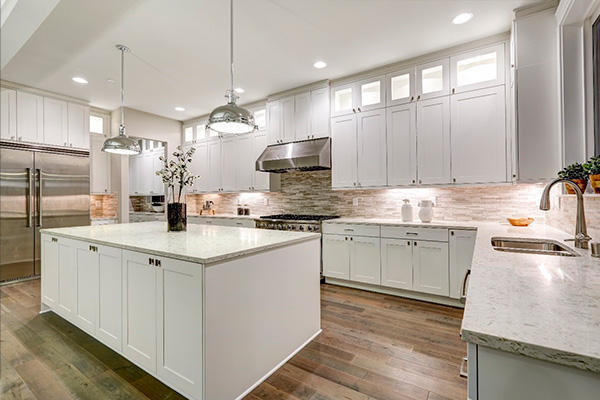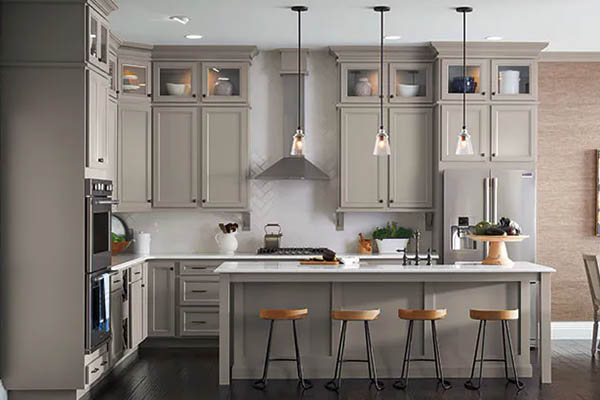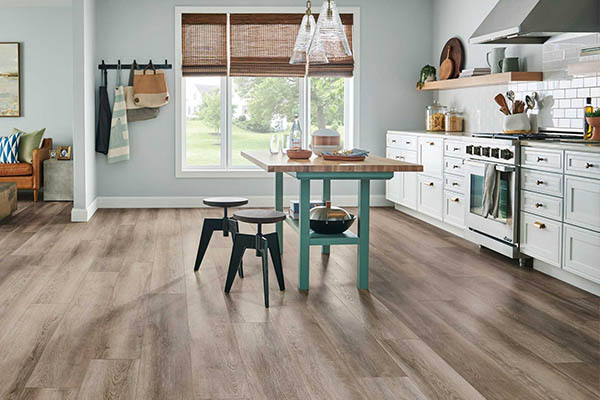Porcelain Tile vs. Ceramic Tile: Which is Better?

At first glance, it may be difficult to tell porcelain and ceramic tiles apart. Both products look alike, have the same applications in flooring and walls, and have similar installation techniques. This is also why the two terms are used interchangeably by customers.
However, porcelain and ceramic tiles have a world of difference. This means one may be slightly more beneficial for your renovation project than the other.
Keep reading a quick yet comprehensive guide on porcelain tile vs. ceramic tile so you have a deeper knowledge of each product before choosing the one that suits your project best!
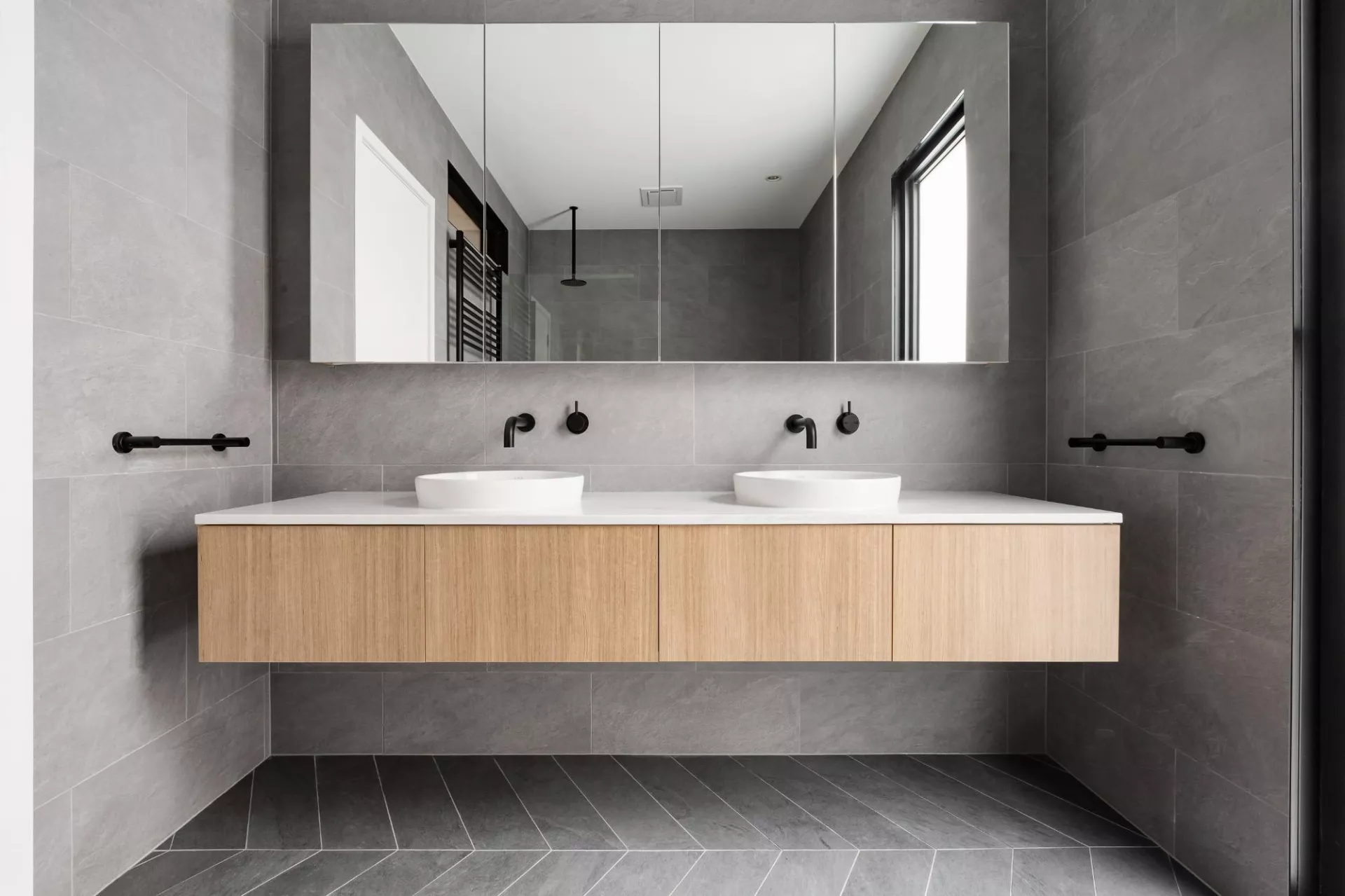
Porcelain Tile vs. Ceramic Tile: The Similarities
Let’s begin by jumping into the similarities between porcelain and ceramic tiles.
Appearance
Ceramic tiles and porcelain have an incredibly similar appearance especially if both are glazed — you could struggle to tell them apart!
Resistance To Heat
Both ceramic and porcelain tiles are incredibly resistant to heat — one of the reasons why they’re used as countertop material for the kitchen.
Care and Cleaning
Ceramic and porcelain have similar care needs. Regularly mop them with a mild soapy water solution, and they’ll stay nice and clean.
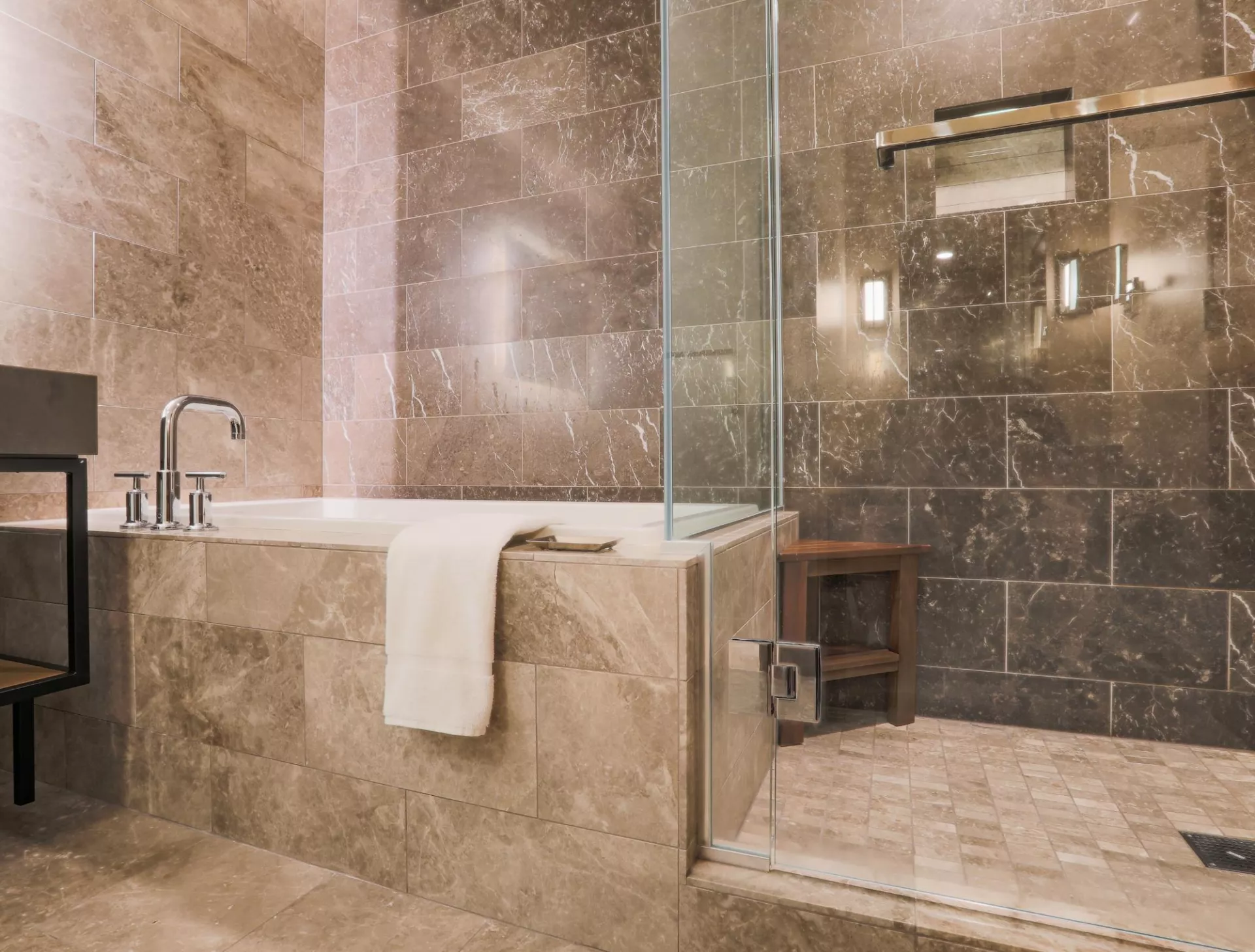
Porcelain Tile vs. Ceramic Tile: The Differences
Keep reading for the list of differences between porcelain and ceramic tiles.
Composition
Ceramic tile is created from coarse clay, various minerals, and water, while porcelain is made with fine-grained kaolin clay, minerals, and feldspar (this gives it its strength). Additionally, porcelain is fired at higher temperatures.
Surface Glazing
Most of the time, you’ll find ceramic tile that is unglazed. On the other hand, porcelain almost always receives a surface glazing treatment.
Water Absorption
Ceramic tile has a water absorption rate of over 0.5, while porcelain’s rate is under 0.5. Additionally, the difference in surface glazing also means porcelain is usually more impervious than ceramic and allows for lesser water absorption.
Durability
Ceramic tiles are less durable than porcelain tiles. This is because porcelain is fired at higher temperatures and made from more refined clay.
Maintenance
Both ceramic and porcelain tiles require a sealer to be applied to the grout lines. However, unglazed ceramic tiles may also require sealing applied all across the tile.
Brittleness
Ceramic is less brittle and doesn’t break easily when under stress. On the other hand, porcelain can break when handled on-site.
DIY-Friendliness
While porcelain tiles installation and ceramic tiles installation techniques are similar, porcelain may require professional handling (and the use of a wet tile saw) due to its brittleness. On the other hand, ceramic is easier to shape and cut with an inexpensive snap cutter, and as a result, it is more convenient to take up as a DIY project.
Cost
Ceramic tile begins at around $0.50 per square foot, while porcelain tile begins at $3. However, the price ranges are vast for each type, going up to $35 per square foot. You could expect high-end designer tiles to have similar costs for both ceramic and porcelain.
Usage
Ceramic tile is typically used for indoor flooring and walls, while porcelain is ideal to use for both interior and exterior use (in areas with mild temperatures)
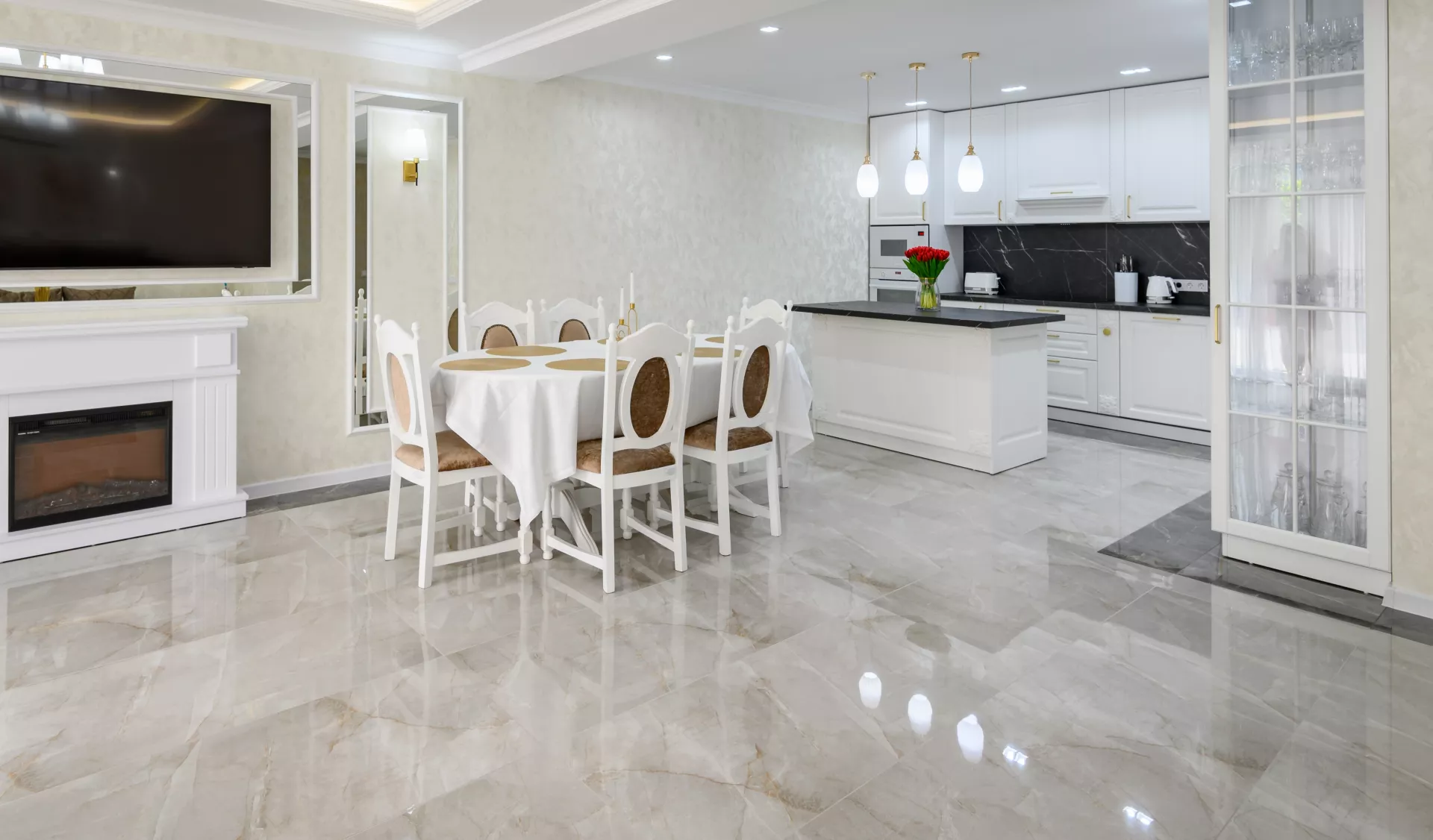
How To Tell Porcelain and Ceramic Tiles Apart
An easy way to tell porcelain and ceramic tiles apart is by observing their color. Porcelain tiles have the same color throughout their thickness. So, if you were to see a chipped piece of the tile, there will be a uniform color throughout the thickness.
On the contrary, ceramic tiles have a glazed surface coloring and a different color underneath. So, you’d observe a variation in the shade in a chipped piece of ceramic tile.
Additionally, porcelain has a smoother finish than ceramic.
Ceramic Tile Sample
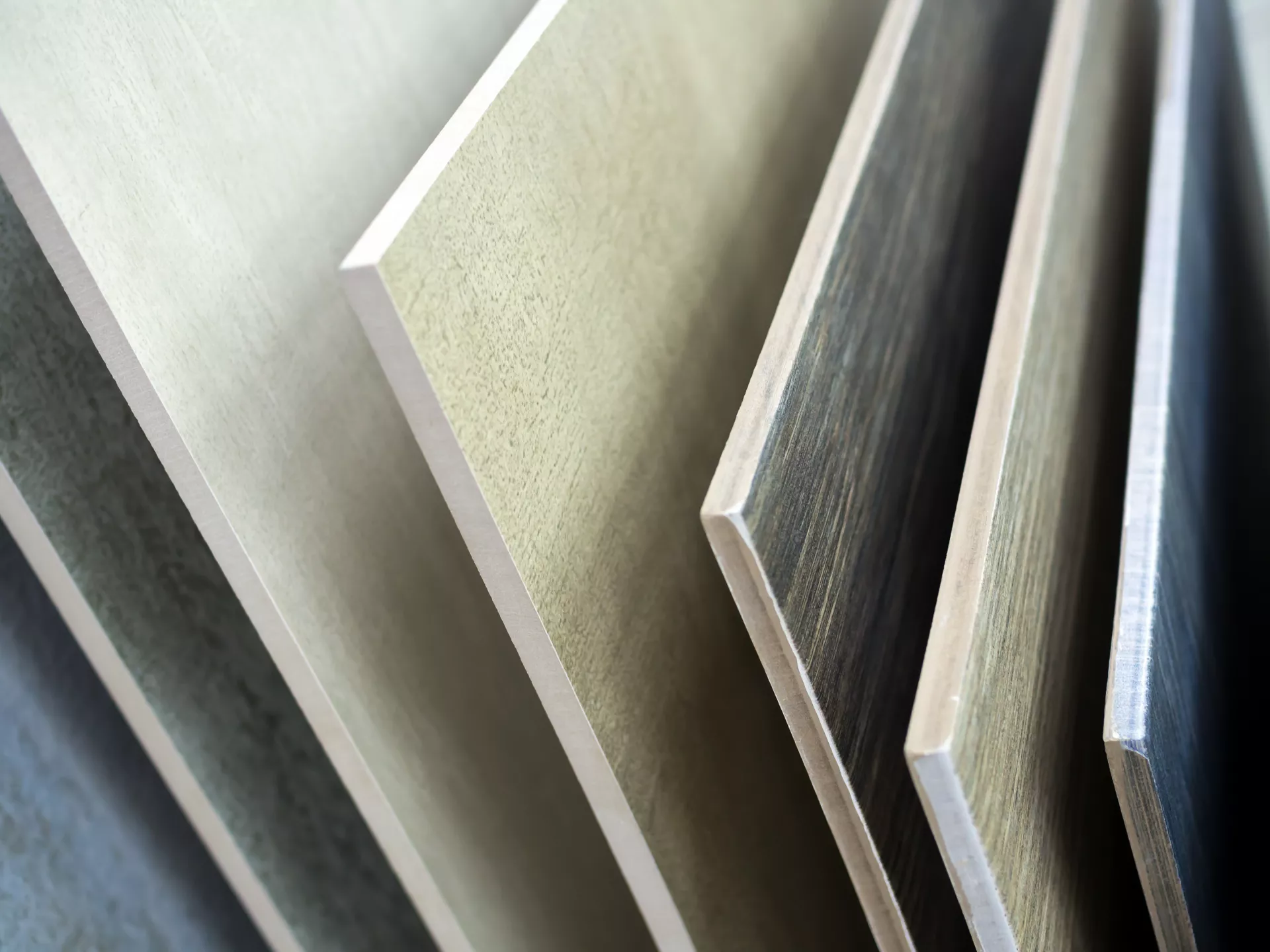
Porcelain Tile Sample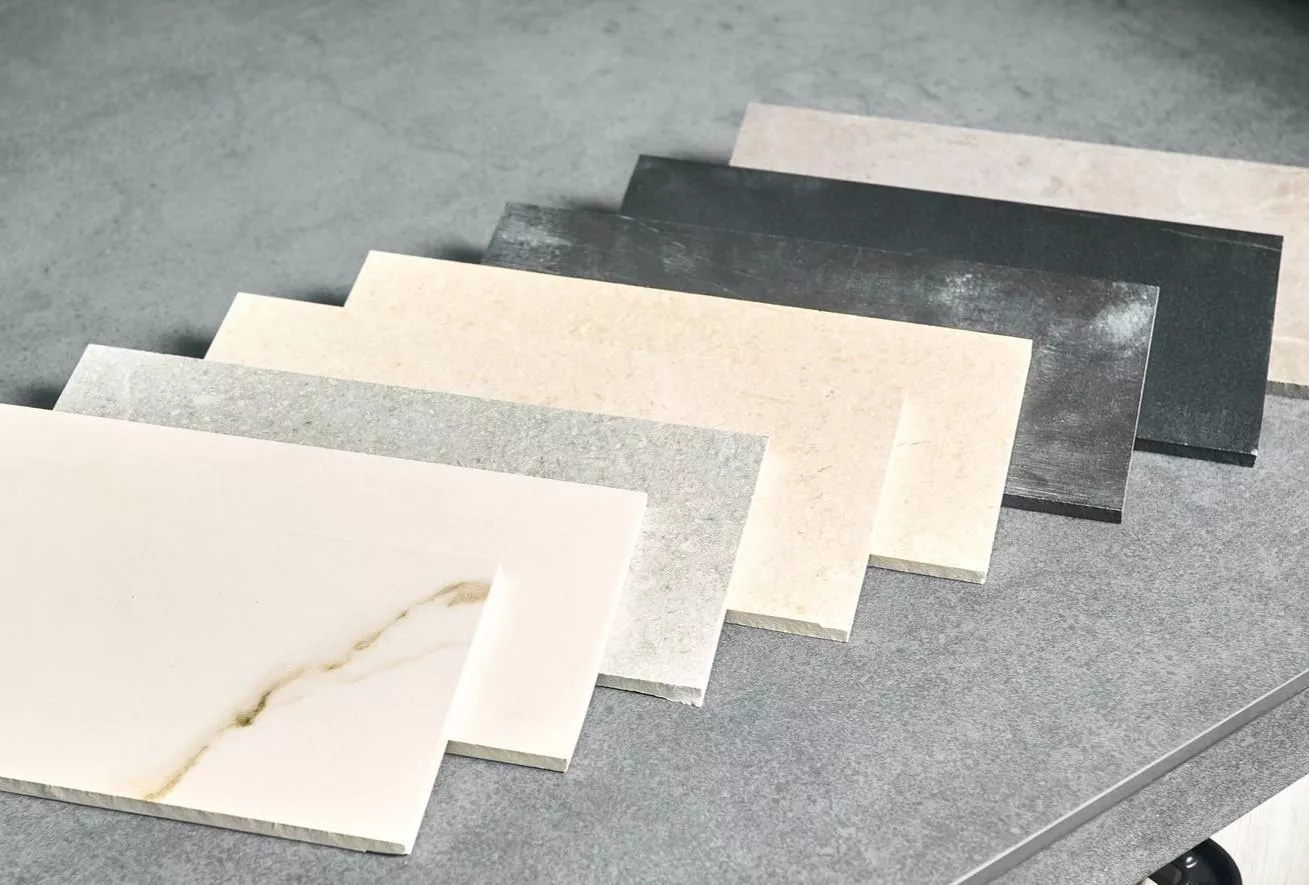
Which One Do You Need: Porcelain Or Ceramic Tile?
The tiles that suit your project best depend on the characteristics you require the most. Below, we’ll list the various characteristics of these tiles and the type that is better for each.
| Characteristics | Tile To Use | Reason |
| Appearance | Porcelain | Comes in a greater variety of designs, including more colors and styles |
| Water Resistance |
Porcelain |
Offers slightly better resistance to water infiltration. (However, glazed ceramic tiles also offer similar water resistance) |
| Durability |
Porcelain |
Harder and better suited for heavy usage |
| Maintenance |
Porcelain |
Requires sealing only at the grout lines. Unglazed ceramic may need sealing across the entire tile. |
| Exterior Use |
Porcelain |
Better suited for exterior use in areas with mild climates |
| Price | Ceramic | Costs lesser than porcelain |
| Brittleness |
Ceramic |
Less brittle and prone to breaking under stress. |
| DIY-Suitability |
Ceramic |
Easier to do yourself without the risk of breaking it while handling it. |
| Heat Resistance |
Ceramic and porcelain |
Both tiles are resistant to heat. |
| Care & Cleaning |
Ceramic and porcelain |
Both tiles have similar caring requirements. |
| Interior Use |
Ceramic and porcelain |
Both tiles are suitable for indoor use in flooring and tiles |
Porcelain Tile vs. Ceramic Tile Comparison: Final Words
Clearly, you can’t choose one winter in the porcelain tile vs. ceramic tile war. Porcelain may sometimes be chosen for its durability and a greater variety of styles, but ceramic comes at a more reasonable price and is easier to DIY. So, pick the factors you wish to prioritize and decide accordingly between porcelain vs. ceramic tiles!
Read our article: Tiles: the ancient material we use every day to find more information about tiles.

